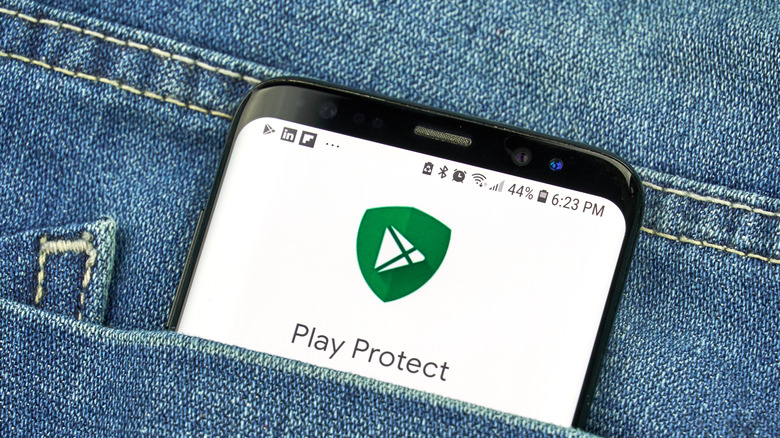How To Remove Malware From Your Android Phone
Smartphones can be easy targets for cyber criminals looking to steal personal information. Android owners, in particular, should watch out as these devices have an even higher risk of attack than iOS devices. This is because it's far easier to develop malware for Android's OS, according to NordVPN, and furthered by the fact that more people use Android devices globally over Apple.
Malware is harmful software that lets hackers illegally access and potentially profit from your private information (via Kaspersky). You may have also read the terms spyware, trojan, worm, or virus. These are all forms of malware whose goal is to target your information but differ in their method of attack. Some of the most aggressive malware include ones that target your financial data and collect your data without you knowing. Others allow hackers to hold your files hostage unless you give them money, Kaspersky notes. As scary as it sounds, you don't have to feel helpless — because there are ways to rid of them and safeguard your devices if you've been hacked. Here's how.
Reboot to safe mode
When you need to check if malware is the cause of your phone's problems, one of the first things you should do is to reboot your phone to safe mode. All third-party apps — which in Android's case are apps that are not created by Google — will be disabled and only default settings will appear. How you enter safe mode may vary from phone to phone. But generally, it involves pressing and holding the power button down for a few seconds (via Digital Trends).
For LG, Samsung, Google Pixel, and other Android devices, here's how you do it:
-
Press and hold the power button until the Power Off option appears
-
Turn on the device. When the animation appears, press and hold the Volume down key. You should see the words Safe Mode at the bottom of your screen. If nothing happens, repeat the process until Safe Mode is enabled.
-
Go to Settings and tap App & notifications.
-
Check all apps in your app list and uninstall apps that look suspicious or are unknown. This may not completely remove the malware but you might be able to stop it from inflicting further damage or infecting other devices in your network (via Norton).
You need to install an anti-malware app pronto
All Android OS devices come with Google's built-in malware checker, Google Play Protect, which can check your phone for anything malicious. It works by running safety checks on apps before they are downloaded. If it detects something harmful, it will warn you that the app you want is potentially dangerous and will deactivate or remove it from your phone.
However, studies from AV-TEST, an IT Security Institute based in Germany, show that you may want to install a stronger program on your device if you want full protection. They carried out a six-month study on a number of anti-malware apps which showed that Google Play Protect ranked at the bottom of their security apps list.
To get the best protection, it may be advantageous to install another anti-malware app on your Android device. Over time, this will help to protect your smartphone from corrupted files and other types of harmful malware. There are also many anti-malware apps available on the market, with the best ones created by Bitdefender, Norton, McAfee, and TrendMicro, according to PCMag.
Don't forget to clear your downloads
Not only can malware be lurking in bad files that you download from the internet, but your phone can also be infected through downloaded apps. Tech Radar reported that over 1 billion Google Play Store app downloads — mostly banking and crypto apps — could be infected by malware. If these attacks are successful, hackers would be able to glean your personal banking information including login and password details.
Malware found in other types of apps can be equally insidious. You can find them in popular apps such as QR readers, flashlight lights, and religious apps. Once downloaded they may sit for hours before cluttering your phone with ads, pop-ups, and advertising links. Often, the goal is to get you to trick you to click, so they can make money from it, even when you're not using the app (via ZDNet). That's why it's always a good idea to clear your cache and downloads on your device if you suspect that you've been hacked (via Avast).



